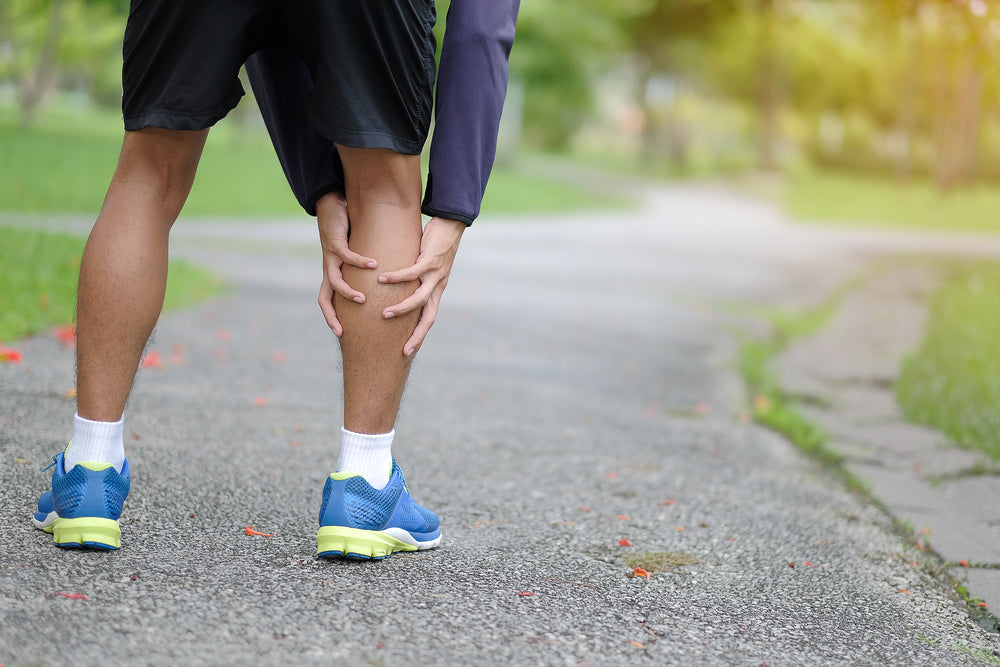Looking to treat your body muscles to a relaxing experience but don't know what massage side effects to expect?
Treating your body to massage therapy can be an incredibly beneficial way to rid your body of pain and stress. Proven benefits of this gentle form of therapy include better blood circulation, improved range of motion, increased mobility, and muscle relaxation.
But like anything else that involves the body, massage therapy can have a few side effects. While they are generally rare and minor, those who are new to massage may be unaware of the possible reactions to this kind of therapy.
That's why we've compiled the most common types of massage side effects people may experience. We'll also discuss how you can avoid or reduce the chances of these reactions.
Common Types of Massage Side Effects
From physical reactions to psychological changes, the side effects of massage therapy may vary from person to person.
Here are some common types of reactions you may experience:
Muscle ache
While treating your entire body to massage therapy can help relieve muscle pain and tension, some people may experience a temporary increase in chronic pain.
This is especially true if you’ve put your body through intense massage techniques like deep tissue or Swedish massage. These intense forms of massage usually require more physical force, which can cause soreness where the massage was performed.
Muscle soreness usually occurs within 24 hours of the massage session.
Nausea
Another side effect of massage therapy to look out for is nausea.
While this side effect isn’t as common as muscle aches, it can occur due to the release of toxins from your body.
When you receive a lymphatic drainage massage, your muscles are being manipulated to release any built-up tension. This can trigger the release of lymphatic fluid and toxins, such as lactic acid, into your bloodstream, which will then need to be flushed out by your body.
The whole process of excreting these toxins can be a bit overwhelming, causing nausea in some people. Nausea can usually be avoided by drinking lots of water both before and after your full-body massage session.
Diarrhea
Just like nausea, diarrhea can be caused by the release of toxins in your body. This reaction is also more common if you’re receiving abdominal massage.
Manipulating the deeper muscles of your body can lead to overstimulation of the digestive system, which can cause loose stools and diarrhea.
If you experience diarrhea following an abdominal massage, it should pass in about 24 hours.
Headaches

Ever experienced a headache after a massage?
You're not alone.
Headaches can be caused by the release of tight muscles in the neck and shoulders. This is common among those who experience muscle knots in these areas, as you or a licensed massage therapist work to relieve muscle tension in these areas.
Other possible reasons why you may experience headaches include the wrong positioning of your head during the massage, dehydration, or a reaction to massage oil. Neuromuscular massage may also cause a headache if you are having an issue with your temporomandibular joint.
Fatigue
Facing fatigue after a massage session may seem counterintuitive, as massage is meant to be a revitalizing experience.
But the reality is that fatigue is one of the most common reactions people experience after a strong massage. This is especially true if you’ve received an intense deep tissue massage or trigger point therapy session, as your body's muscles may need time to recover from the physical manipulation they just experienced.
Some possible reasons why you may experience fatigue include your body being in a relaxed state, the release of endorphins, and dehydration.
Skin redness
Have you ever noticed a reddening of your skin after one or two massage sessions?
This is usually nothing to worry about and should resolve itself within a few hours.
Redness is caused by increased blood flow during a strong massage, which can cause the skin to become flushed and slightly irritated. In some cases, the skin may be more sensitive and easily irritated by massage therapy, which can lead to redness.
Besides the use of intense massage techniques, the use of an oil or cream can also lead to temporary skin redness.
Bruising
Last on our list of massage effects to look out for is bruising.
While rare, this side effect can occur due to the manipulation of deeper muscle tissues during massage therapy.
This is more common when receiving deep tissue or sports massage, as these techniques require more physical force on the core muscles to help relieve tension. If you do experience bruising after a strong massage session, don’t worry – it should resolve itself in a few days.
While getting a massage can be beneficial to your health, it’s important to be aware of the potential side effects that may come with it.
Whether you're dealing with muscle aches, nausea, headaches, or bruising, finding ways to mitigate these side effects can help you get the most out of your massage experience.
That's what it's all about, after all—feeling your best. To help you on your journey to wellness, we'll be sharing our top tips for dealing with massage side effects in the next section.
Dealing With Side Effects of Massage Therapy
Finding ways to minimize the adverse effects of massage therapy can help make your experience a pleasant one.
Here are some tips that may help you:
Drink plenty of water
Drinking plenty of water is a crucial part of mitigating any side effects from getting a massage.
With dehydrated layers of muscle fibers, our bodies can’t flush out toxins as efficiently. Possible side effects experienced by people with low water intake can include headaches, fatigue, skin redness, and even nausea.
That's why it's important to make sure you drink plenty of water before and after your massage. Not only will this help flush toxins out of your body, but it also helps reduce the chances of you experiencing any of the massage side effects that come with it.
Position your head correctly
Recall how we discussed earlier that headaches can be caused by wrong positioning of your head on a massage table?
Well, there is a way to fix this!
Make sure to adjust your head position periodically during the massage session.
This will help ensure that your head is supported properly and reduce the chances of headache-causing tension in the neck area. You can even ask your massage therapist if they can help you adjust your head position during the session.
While this may not completely eliminate the possibility of getting a headache after the massage, it sure can help reduce its chances.
Eat light meals
Another way to minimize any massage side effects is to make sure you eat light meals before and after your session.
Heavy meals can cause nausea, bloating, or diarrhea during the massage, while getting a massage on an empty stomach can also lead to lightheadedness and fatigue.
Therefore, it's best that you eat light meals before getting a therapeutic massage – like a bowl of salad or some fruits – so as to avoid any possible side effects.
Use a lighter massage technique
A primary reason why some people may experience side effects like muscle aches and bruising after a massage session is due to the intensity of the massage.
If you're new to massage therapy or have sensitive skin, it's best to ask your therapist to use a lighter touch. This will help reduce your chances of getting any side effects from massage therapy and make your experience more enjoyable.
If you're making use of a highly portable self-massage tool like a massage gun, it's also essential to pay attention to the intensity of your massage and work up gradually. High-end massage gun models like the Fusion Elite and Mini offer a range of intensity settings to ensure you set the right level for your needs.
This way, you can ensure a gentle massage experience with minimal risk of side effects.
Get enough rest
Getting enough rest is essential to minimizing the side effects of massage therapy.
After a session, your body may be sore and tired due to excessive pressure and manipulation of deeper muscle connective tissues. This can result in more severe side effects, like headaches, muscle ache and nausea.
To ensure optimal recovery, it's important to get adequate rest – that means getting at least 7 to 8 hours of sleep every night.
When you're well rested, your body can better cope with any physical stressors, such as a massage session.
Frequently Asked Questions
After going through this article, you may still have some questions about massage side effects. Here are some of the most common ones:
How long do the side effects of massage therapy last?
The side effects of massage therapy can last anywhere from a few minutes to several days, depending on its intensity and other factors.
Generally speaking, minor muscle soreness or aches after a light massage session should subside within 24 hours. However, severe side effects like headaches or nausea may persist for longer periods of time.
If you experience any side effects that last for more than a few days, it's best to seek medical treatment.
Is it possible to get a massage without experiencing any side effects?
Yes, it is possible to get a massage treatment without experiencing any side effects.
The key is to take certain precautions and adjust your massage routine accordingly. Firstly, make sure you communicate with your massage therapist about your preferences and needs so they can adjust their technique accordingly.
Secondly, take small breaks during the session and ask for light pressure to be used if needed – this will help ensure optimal comfort while still providing therapeutic benefits. Other ways to minimize side effects include eating light meals before your massage session, using a lighter massage technique, and getting enough rest.
Can I experience more than a side effect after a massage?
Yes, it is possible to experience more than one side effect after a massage session.
Depending on the intensity of the massage and other factors, you may experience a combination of different side effects such as muscle cramping, headaches, nausea, fatigue, or lightheadedness.
What's more, for individuals with sensitive skin or underlying health conditions, there could be an increased risk of experiencing more than one side effect.
Conclusion
While massage therapy has tons of beneficial effects, it can also have certain side effects.
Common side effects of massage therapy include muscle stiffness, headaches, nausea, fatigue, and lightheadedness.
Experiencing one or more of these side effects is perfectly normal, and they typically subside within 24 hours.
Simple ways to minimize the risks of experiencing these side effects include communicating with your massage therapist, taking small breaks during the session, and getting enough rest. You can also opt for a lighter massage technique or use a massage gun with adjustable intensity settings.
By following these simple tips, you can enjoy the benefits of any type of massage therapy without having to worry about any unwanted side effects. Hope you found this post helpful in understanding what to expect from your massage session.
Reach out to our team for any other queries you may have about massage therapy and its side effects. We're more than happy to help!




